
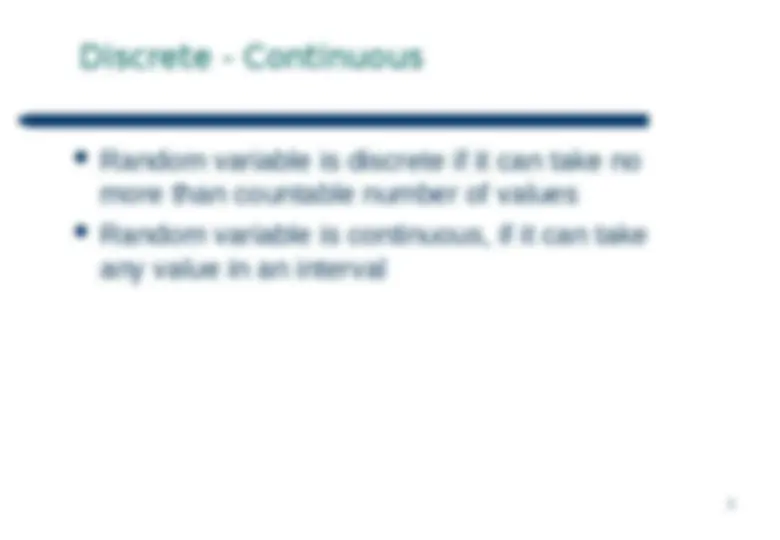
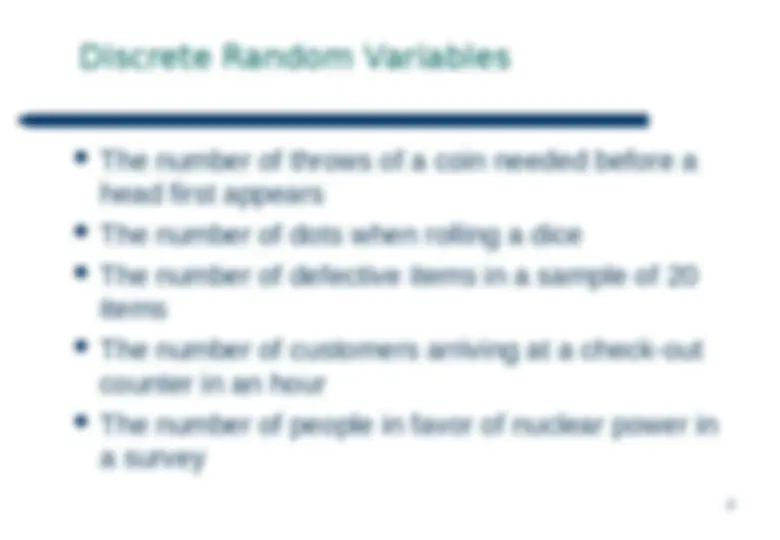
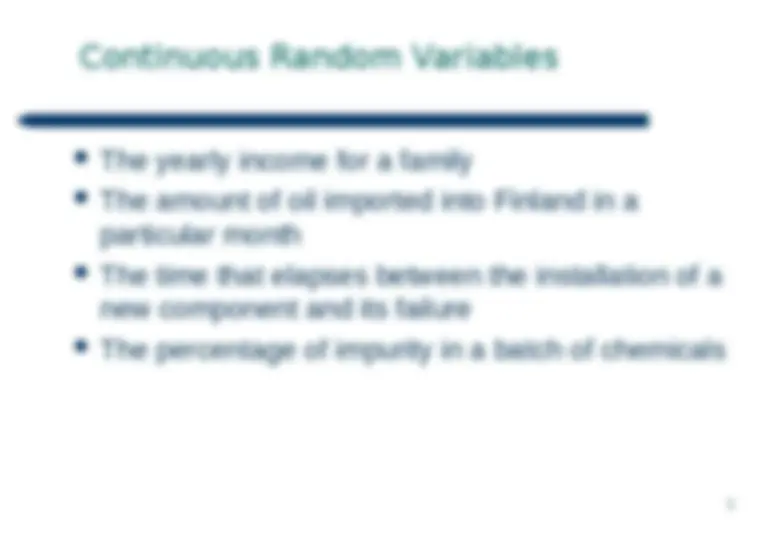
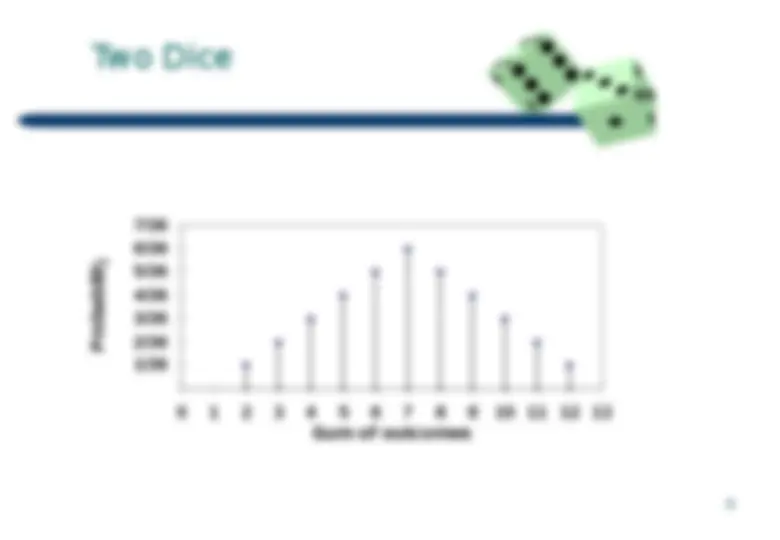
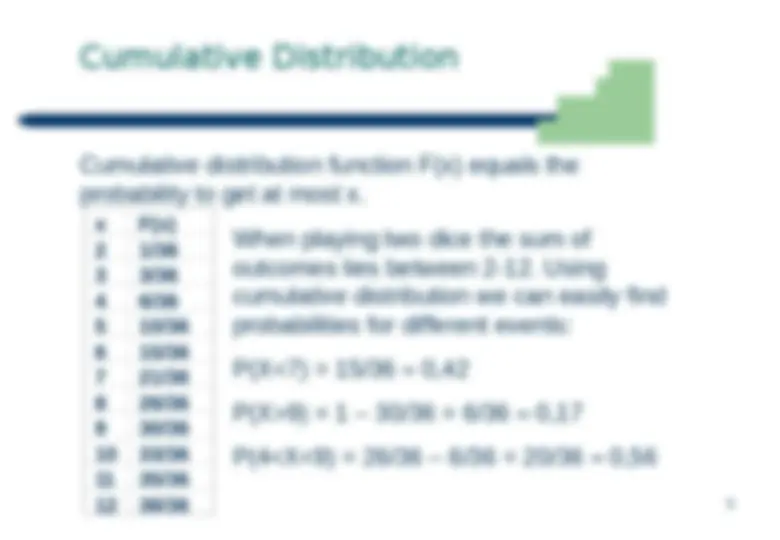
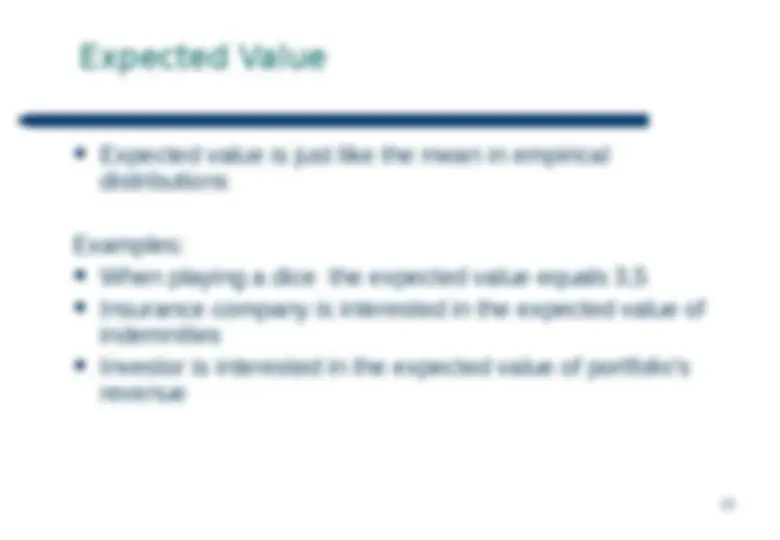
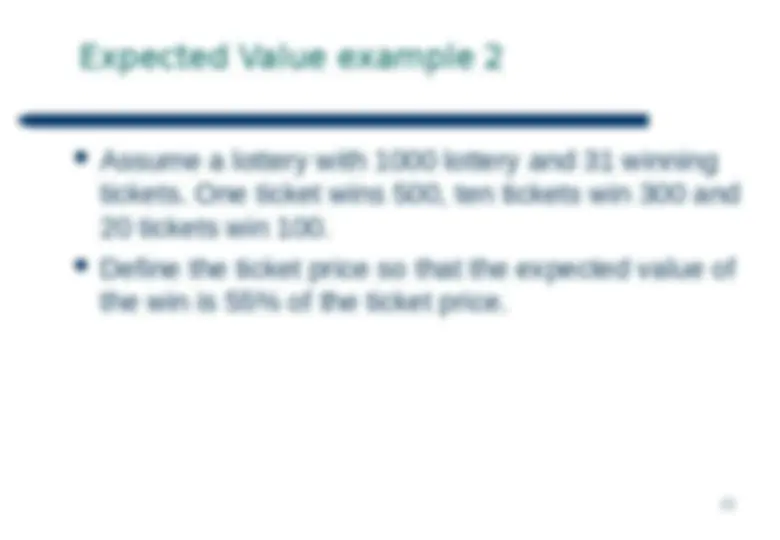
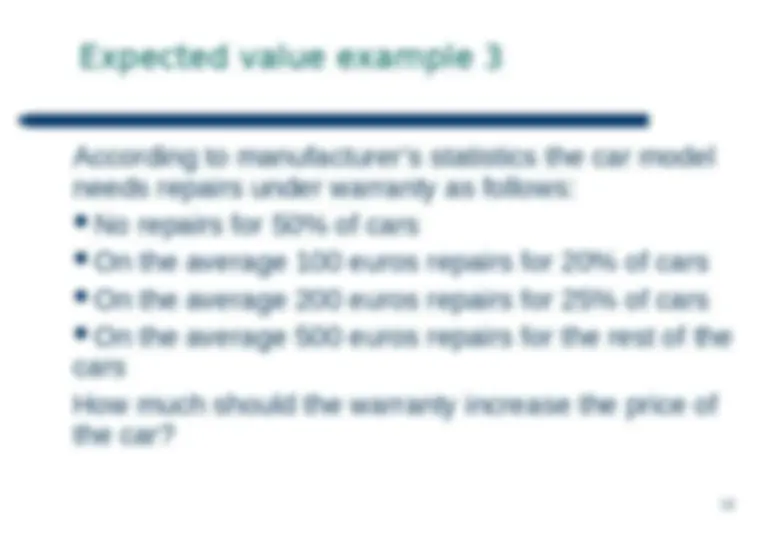
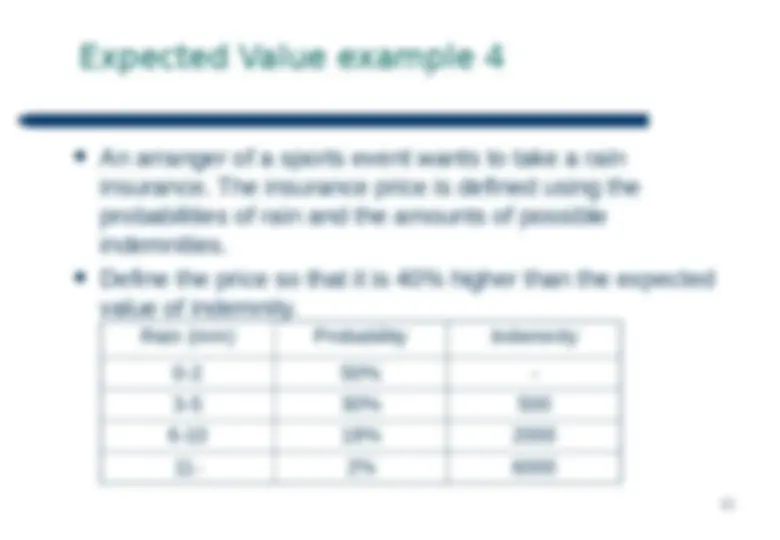
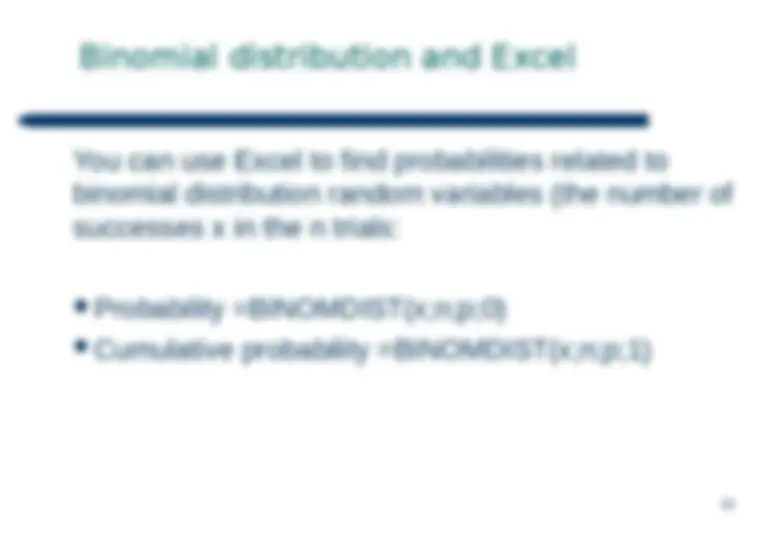
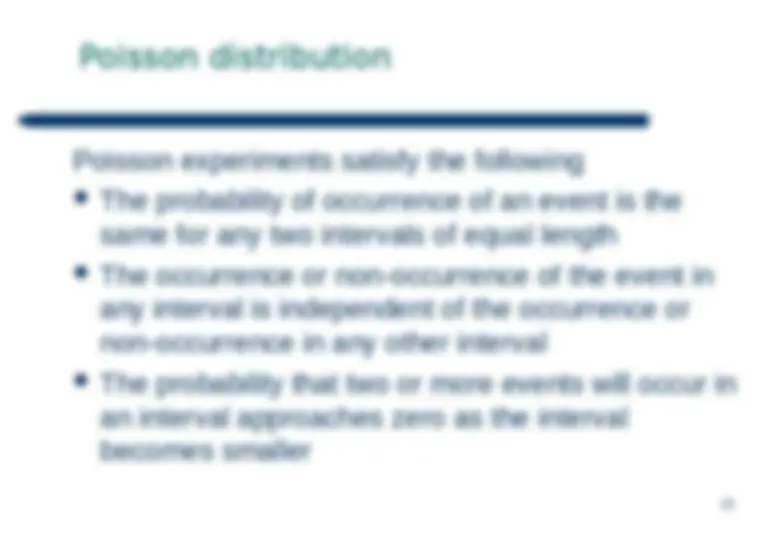

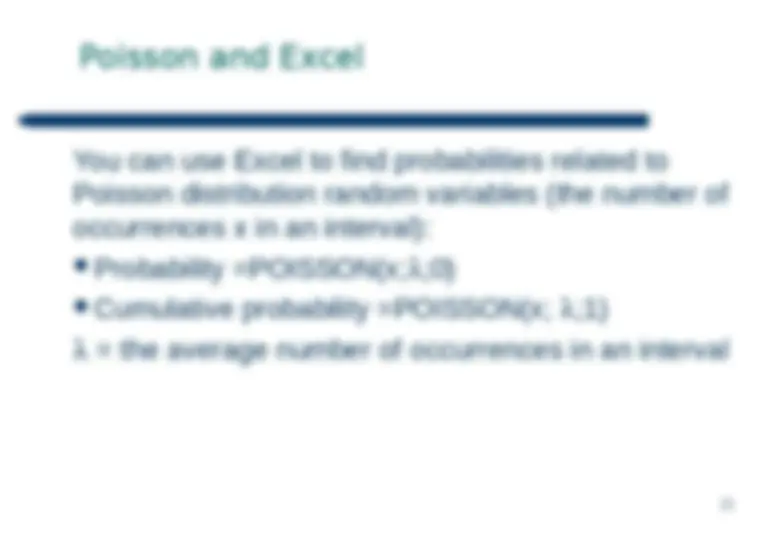
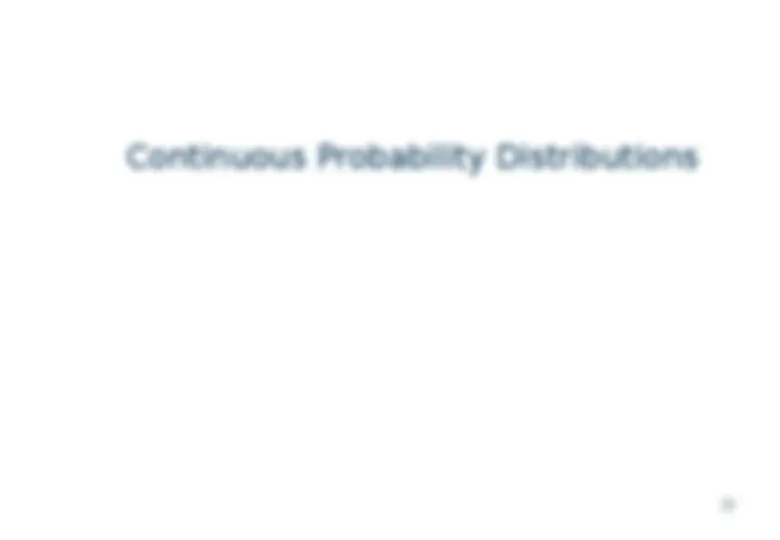
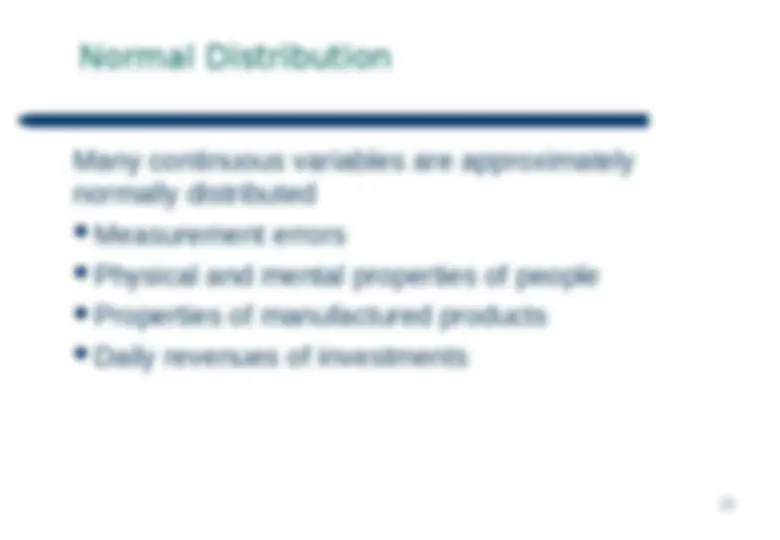
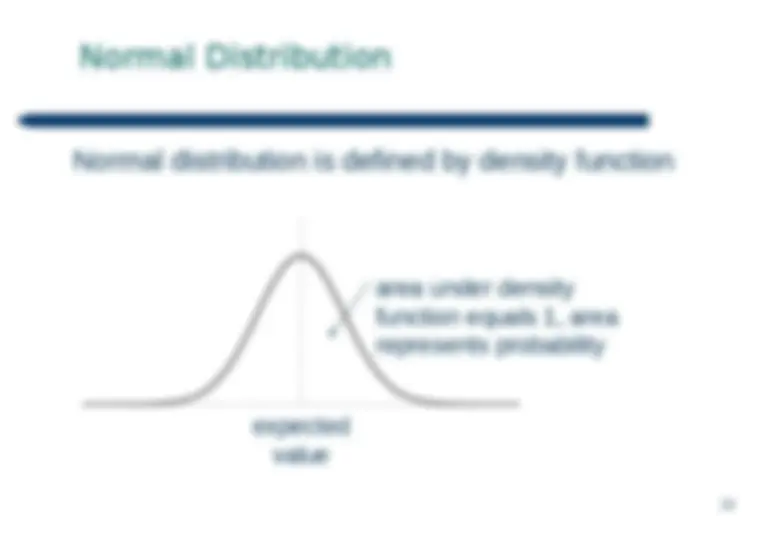
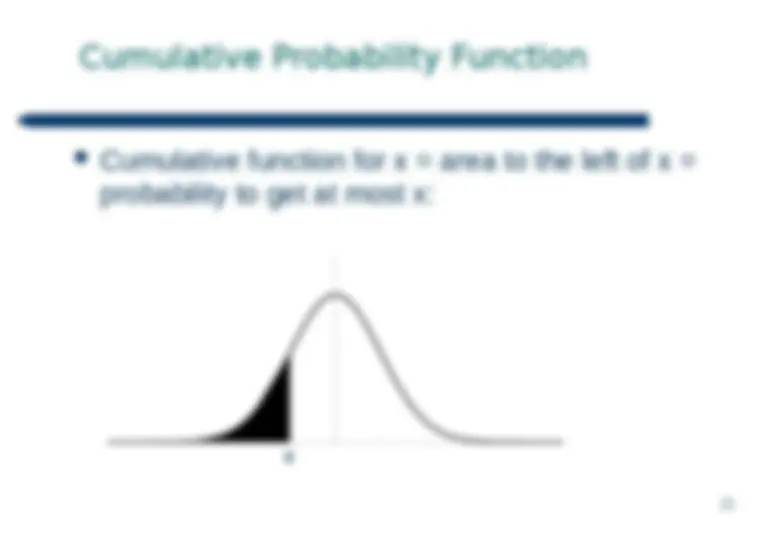
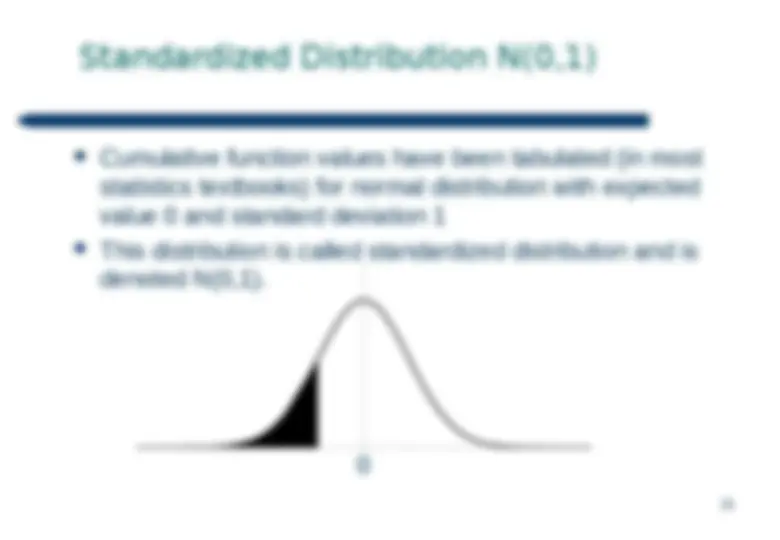
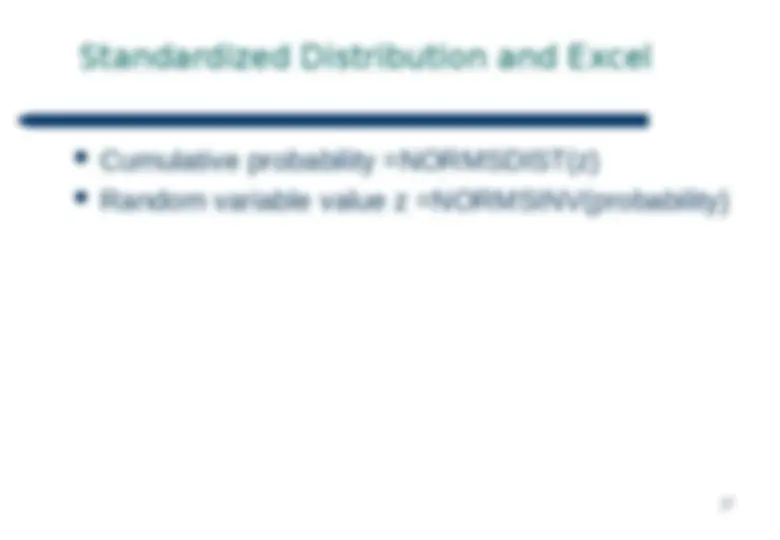
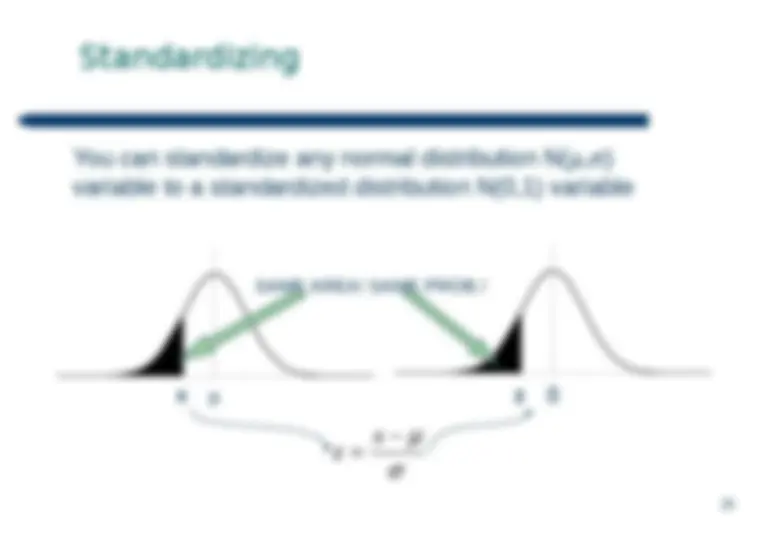
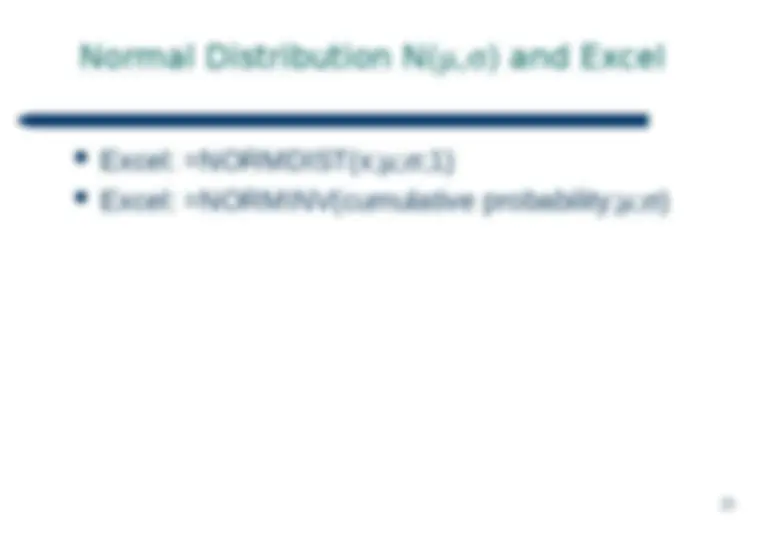


Study with the several resources on Docsity

Earn points by helping other students or get them with a premium plan


Prepare for your exams
Study with the several resources on Docsity

Earn points to download
Earn points by helping other students or get them with a premium plan
Community
Ask the community for help and clear up your study doubts
Discover the best universities in your country according to Docsity users
Free resources
Download our free guides on studying techniques, anxiety management strategies, and thesis advice from Docsity tutors
This shows how to solve the questions of probability distributions.
Typology: Study notes
1 / 29

This page cannot be seen from the preview
Don't miss anything!






















(^) Random experiment is an experiment with
random outcome.
(^) Random variable is a variable related to a
random event
(^) The number of throws of a coin needed before a
head first appears
(^) The number of dots when rolling a dice
(^) The number of defective items in a sample of 20
items
(^) The number of customers arriving at a check-out
counter in an hour
(^) The number of people in favor of nuclear power in
a survey
(^) The yearly income for a family
(^) The amount of oil imported into Finland in a
particular month
(^) The time that elapses between the installation of a
new component and its failure
(^) The percentage of impurity in a batch of chemicals
If the probability to win when rolling a fortune wheel is 15% then the probability distribution for the number of wins in 5 rolls is:
number of wins probability 0 44,3705% 1 39, 2 13,8178% 3 2,4384% 4 0,2152% 5 0,0076%
0
1/
2/
3/
4/
5/
6/
7/
0 1 2 3 4 5 6 7 8 9 10 11 12 13 Sum of outcomes
Probability
(^) Expected value is just like the mean in empirical distributions
Examples: (^) When playing a dice the expected value equals 3, (^) Insurance company is interested in the expected value of indemnities (^) Investor is interested in the expected value of portfolio’s revenue
(^) The expected value for a discrete random variable
is obtained by multiplying each possible outcome by its probability and then sum these products
(^) Assume a lottery with 1000 lottery and 31 winning
tickets. One ticket wins 500, ten tickets win 300 and 20 tickets win 100.
(^) Define the ticket price so that the expected value of
the win is 55% of the ticket price.
According to manufacturer’s statistics the car model needs repairs under warranty as follows: No repairs for 50% of cars
On the average 100 euros repairs for 20% of cars
On the average 200 euros repairs for 25% of cars
On the average 500 euros repairs for the rest of the
cars
How much should the warranty increase the price of the car?
The experiment consists of a sequence of n identical trials
All possible outcomes can be classified into two
categories, usually called success and failure The probability of an success, p, is constant from trial to
trial The outcome of any trial is independent of the outcome of
any other trial
Binomial experiments satisfy the following:
Binomial Distribution Random Variables
(^) The number of heads when tossing a coin for 50
times
(^) The number of reds when spinning the roulette
wheel for 15 times
(^) The number of defective items in a sample of 20
items from a large shipment
(^) The number of people in favour of nuclear power in
a survey
Poisson experiments satisfy the following
(^) The probability of occurrence of an event is the
same for any two intervals of equal length
(^) The occurrence or non-occurrence of the event in
any interval is independent of the occurrence or non-occurrence in any other interval
(^) The probability that two or more events will occur in
an interval approaches zero as the interval becomes smaller
Poisson Distribution Random Variables
(^) The number of failures in a large computer system
during a given day (^) The number of ships arriving at a loading facility
during a six-hour loading period (^) The number of delivery trucks to arrive at a central
warehouse in an hour (^) The number of dents, scratches, or other defects in
a large roll of sheet metal (^) The number of accidents at a crossroads during
one year